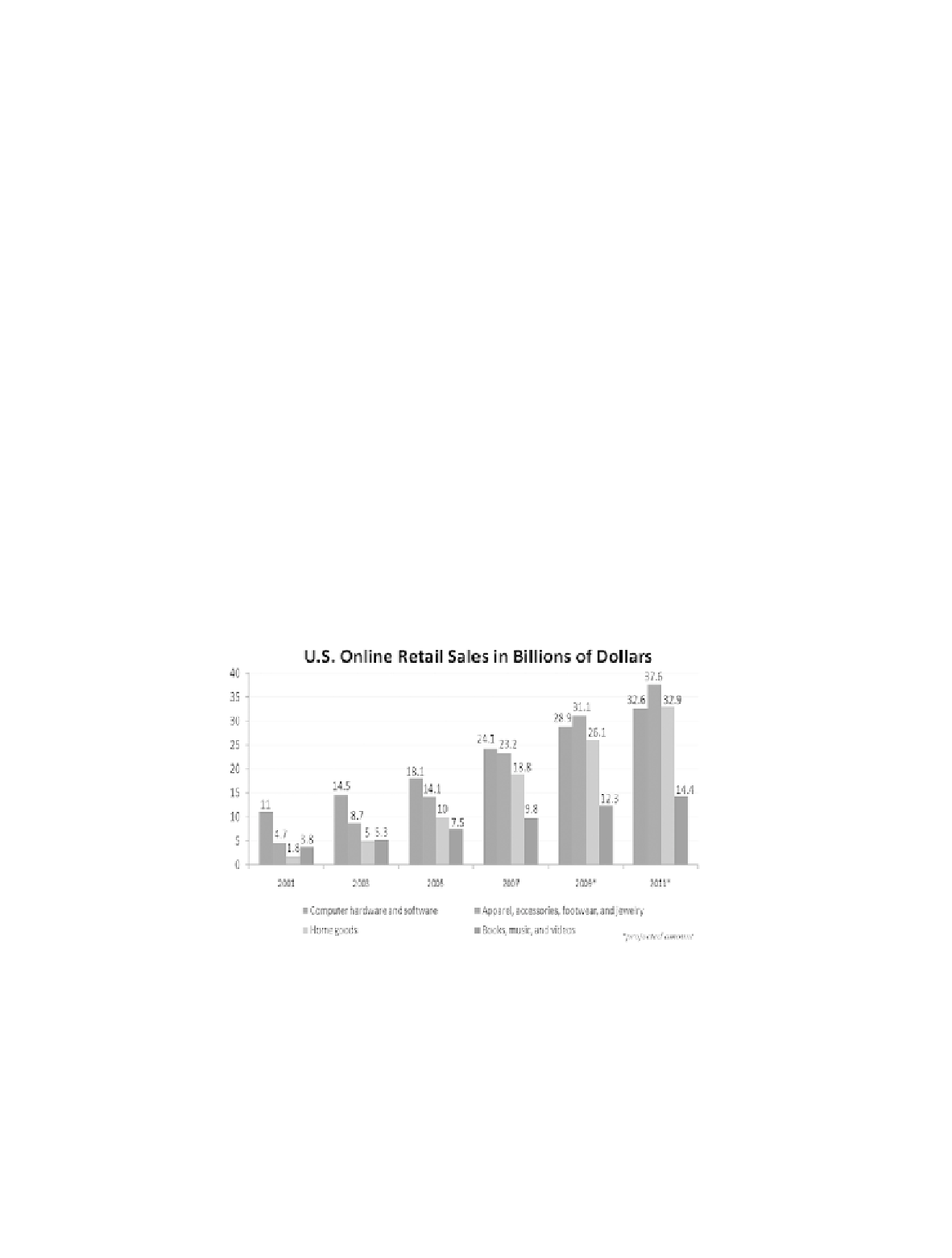HTML and CSS Reference
In-Depth Information
You may be surprised to discover that the most money is being made in B2B e-commerce—
businesses selling to other businesses. According to the U.S. Census Bureau, in 2007
business-to-business transactions accounted for 93% of e-commerce in the United
States.
Up until the recent economic downturn, e-commerce demonstrated steady growth. The
U.S. Census Bureau reported that online retail sales increased from $24.1 billion in 2000 to
$128.1 billion in 2007. eMarketer (
http://www.emarketer.com/Article.aspx?
R=1007142)
forecasts a decrease of B2C e-commerce sales in 2009 with a rebound expected when
the economy improves (potentially 2010-2011).
You may be wondering what people are buying online. A report compiled by Jupiter
Research (available at
http://www.census.gov/compendia/statab/tables/09s1016.xls)
indicated that the top four categories for retail online sales in 2007 (the most recent
year with actual sales figures) were the following:
1.
Computer hardware and software ($24.1 billion)
2.
Apparel, accessories, footwear, and jewelry ($23.3 billion)
3.
Home goods ($18.8 billion)
4.
Books, music, and videos ($9.8 billion)
The chart in Figure 12.1 displays the online retail sales figures for these categories for
the years 2001-2011 (projected).
Figure 12.1
E-commerce retail
sales categories
Now that you know what is selling the best online, who are your potential online
consumers? eMarketer predicted that in 2010, over 159 million Americans aged 14 and
over will shop online. A survey by the PEW Internet & American Life Project
(
http://www.pewinternet.org/Static-Pages/Trend-Data/Whos-Online.aspx)
indicated that
while about the same percentage of men and women are online, Internet usage varies by
age, income, and education. Table 12.1 shows an excerpt of this research.

Search WWH ::

Custom Search